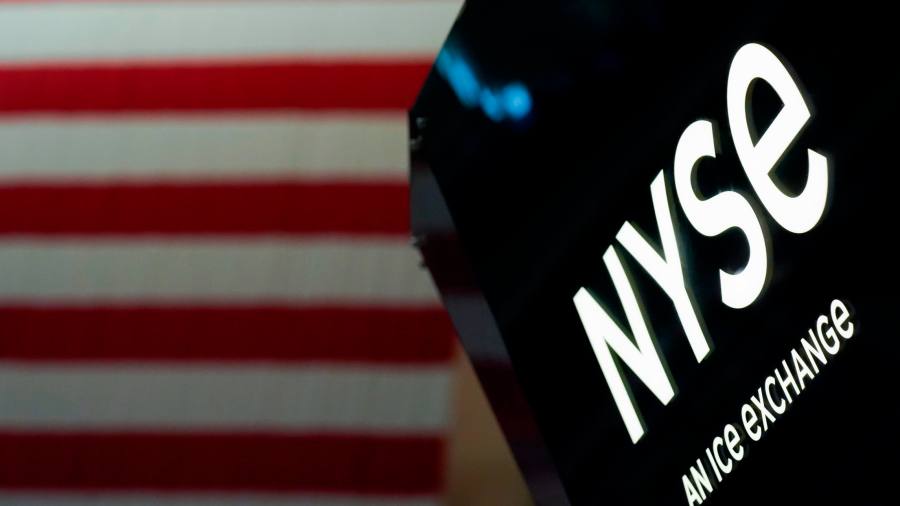
Bankers on initial public offerings are often keen to take credit for working on high-profile deals, however marginal their involvement.
But anyone hoping to stand out in their next client pitch with a reference to this year’s largest initial public offering is likely to be disappointed: almost the whole industry appeared to be in the prospectus.
Corebridge, the life and asset management business of insurance group AIG, went public this week with the help of 43 different banks, the second-highest number of managing underwriters for a US listing on record, according to data collected by the University of Florida’s Jay Ritter.
The numbers highlight a questionable habit among companies of using prestigious appointments more like a gift to be bestowed on favoured partners.
“They’ve [often] got some business arrangement with the vast majority of underwriters on the cover,” said one senior banker who didn’t work on the Corebridge offering. “They’re paying back the financial institutions that are their partners.”
Stock market volatility and economic uncertainty have made 2022 a horrible year for equity capital markets. Corebridge was the first company to raise more than $1bn through a US IPO since January, and the deal was closely watched as a test of whether investors would have any appetite for a broader revival in listings before the end of the year.
In such a tough environment, increasing the number of underwriters might look like a sensible idea: it could help ensure the share offer reaches as many potential investors as possible, and spread the risk for banks who don’t want to be caught carrying the can in case of a disaster.
In practice, however, the banks on the top line will end up doing the vast majority of the work on any IPO regardless of the number of names lower down the prospectus.
“The number of managing underwriters is more about Corebridge than the state of the market,” according to Ritter.
Corebridge’s 6 biggest bookrunners handled more than 75 per cent of shares, while the bottom 15 did 1.5 per cent between them. On Visa’s 2008 listing — the last time a US company hired more underwriters than Corebridge — the top 2 bookrunners handled 50 per cent of the shares on offer, while the bottom 30 underwriters contributed a combined 7 per cent.
In theory, “co-managers” are picked because they can provide good analyst coverage, or complement the breadth of the lead bookrunners by giving access to a niche cohort of investors.
There are some positives, such as creating opportunities for groups that have traditionally struggled to break into the sector. Corebridge said its syndicate included 10 firms that it classed as “diverse”.
But some of the larger companies on its underwriter list are hardly known for their US IPO expertise. Natixis and ING, for example, won mandates despite each working on just two US floats in 2021 — the hottest year for equity capital markets in history — according to Dealogic data.
Both banks were also co-managers on Corebridge’s $6.5bn bond offering earlier this year.
Corebridge declined to comment on why it hired so many underwriters.
Record-holder Visa was owned by a consortium of thousands of banks before it went public, so it would not be surprising if the company had a particularly large number of companies it felt obliged to hire for the IPO.
Likewise, Corebridge and AIG’s tumultuous recent history may have given it more advisers to thank than most companies. Since 2008, AIG has received and paid back a $182bn government bailout while churning through seven chief executives. It has sold everything from Hong Kong insurer AIA to a Vermont ski resort, and pivoted from planning life insurance acquisitions to carving out the whole life insurance business as it jumped between multiple restructuring plans.
AIG chief Peter Zaffino told a conference last week that he “couldn’t be more pleased with the progress” the company had made in its latest turnround, with the Corebridge IPO one of the last steps in creating a slimmed down, specialist property and casualty insurer.
Long-suffering AIG investors would be forgiven some irritation at the company for hiring more banks for the listing than some companies needed for deals multiple times its size. The near-record number of underwriters wasn’t enough to stop the IPO pricing at the bottom of its target range, as markets were rocked by concerns about inflation during the final days of the deal roadshow.
Still, if the milestone finally marks an end to AIG’s near two decades of disruption, they may decide giving away a few easy paychecks on the last deal was worth it.